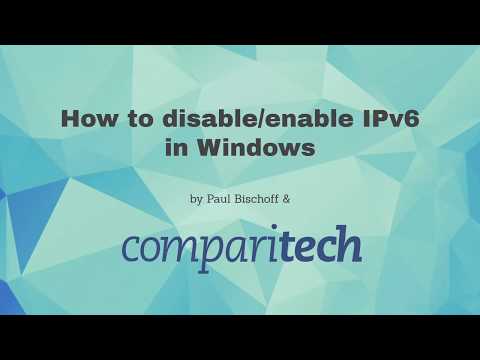When It comes to the connectivity of Our Computer/Laptop, Iphlpsvc.dll plays a crucial role. Windows Provides Tunnel connectivity, using the IPV6 transition’s technology such as 6to4, Port Proxy, ISATAP, and Teredo using the IP-HTTPS. When this service is not active the computer or system will not have the tunnel connectivity benefits offered by the technology. Regarding having the connectivity, these are the primary services for the computer.
We have no idea how to lead ourselves without an internet connection, and thus it plays a vital role in our professional lives. But when it comes to establishing an internet connection, there are a few things that we should be wary of.
There are thousands of people, who reported that IPHLPSVC is using a lot of memory. But disabling it may sometimes cause a problem so be sure before disabling it. And if you face DNS_PROBE_FINISHED_BAD_CONFIG Error, then simply enable IPV6.
Post Contents
How to Disable IP Helper “IPHLPSVC” Services Tuning? Windows 7/10
The IPHLPSVC stands for Internet Protocol Helper that is IP Helper API that allows the modification of the network configuration settings of your system or computer. Below is the complete guide to solve this issue of iphlpsvc.
Instructions before start-up
When it comes to iphlpsvc, there should be a valid program to run for the startup, and most of the people don’t know or have no idea about the program that needs to run. Many applications run for iphlpsvc, but the main programs work efficiently to start the program and operate smoothly.
The iphlpsvc is the connectivity for the services, and this is the main thing that has to be followed for various stages in the working process to bring out benefits from the technologies.
Some of the leading technologies provided here in the guide are ISATAP, Teredo and Port Proxy. The below is the guide comprising of four methods to give a brief understanding of the procedures to be followed to disable IP Helper or start or stop the process using services.msc, Registry Editor, Command Prompt, and Microsoft System Configuration Utility.
Method 1: Services.msc
The Service console is used to start or stop the process. Hence Service.msc helps in enabling and disabling the windows services. The programs are executed when the windows boot up, and the programs are at the system level. The method doesn’t require logging into the Windows Operating system and can run from the command prompt.
To establish the connectivity, we need to follow step-by-step procedure and also need to develop a set of instructions at a particular time to analyze the performance by either starting or stopping the process. So, let’s proceed with the procedure. I have added both a Full Video Guide and a step-by-step written guide.
Detailed Guide with Images:
- Click on the start button. The start button appears as the pearl icon with windows logo in the left corner of the screen in Windows 7. And Windows 10 the button is white windows logo at the bottom left corner on the screen.
- This step involves opening of a service console program. After the start menu opens, search for the program services.msc. In windows seven look for “search program and files” while in windows ten reach out to the search bar, and enter “services.ms” and press enter.
- Once you open that program, you will be directed to a new window for the Service console. Now you have to locate the IP helper that carries the main process. Now open the properties of IP helper by clicking on the “IP Helper” on service console.
- You are again directed to a new window with four tabs on the top namely General, Log on, Recovery and Dependencies. Open the general tab and search for the “startup type” option. This option results in a dropdown menu with four option Automatic, Manual, Automatic Delayed, and Disable. Now select the Disable option, the automatic delayed option is selected by default. And modify the option to stop the process.
- Now select the “Disabled” option and then click on the OK button and the close window of properties and then the Service console window.
And it is done! This was the complete in-detail procedure to disable the IP helper service manually through services.msc console in windows 7 and 10.
Method 2: Registry Editor
Using Registry editor, we will be able to show about startup change in the type of IP. The Registry Editor contains a wide variety of Windows Configuration settings. The third party installed software will also be able to use the Registry to store settings. Such settings are not revealed to the user. From here the users can change a variety of settings. The term for such setting modification is referred as Registry Tweaks or Registry Hacks.
Note: If you have not dealt with the registry editor earlier or know nothing about it then make sure not to delete or change any settings.
Here is the step-by-step procedure to use Registry Editor to disable the IP helper.
- First of all, Click on the start button.
- This step involves opening of the registry editor program after the start menu opens, search for the program registry editor. In windows, seven looks for “search program and files”. While in windows ten reach out to the search bar and enter “regedit” and press enter.
- A small dialogue box appears asking to confirm the User Account Control. Now, Click on Yes button and allow it and proceed further.
- Click on iphlpsvc found on the left panel. Click on Start file on the panel at the right side.
- You need to enter either 1 or 0 as the change of settings here is in binary format. You are required to change the startup type from any of the following Automatic, Manual, Disabled, Manual, and Automatic Delayed. So, you have to replace 1 with 0 and 0 with 1 to modify the settings.
- In this step, we will know how we can stop IP Helper using the Registry editor. Go to HKEY_LOCAL_MACHINE\SYSTEM\CurrentControlSet\services\iphlpsvc and then check the Start Registry key
- Double click on Start file and edit value in the newly opened dialogue box.
- Change the Startup type to 1. Automatic, 2. Manual, 3. Disabled and 4. Automatic delayed.
- Now enter digit 2 in the Value data box and click OkAnd that’s all you need t do to disable IP helper using the registry editor.
Method 3: Command Prompt
Command Prompt or CMD is a Command Line Interface (CLI). The Command Prompt is executable CLI program that can be executed from the cmd.exe. It is the most powerful tool that is not available through the GUI tools. CMD is referred to as Command Shell and is officially called as Windows Command Processor.
To use CMD, we must enter a valid command prompt command. There exist a large number of commands for Windows 7 and Windows 10. Now let’s understand step by step on how to stop IP Helper using Command Prompt. It is one of the main methods to able or disable the IP Helper.
- Click on the start button.
- Now you have to open the command prompt program. After the start menu opens, search for the program “cmd”. In Windows 7, look for “search program and files” while in windows ten reach out to the search bar, enter “CMD” and press enter.
- Now open cmd as “Run as administrator” and allow user Account control by pressing the Yes button. You will be directed to the CMD window.
- Now copy the registry key by right-clicking on CMD window before pressing the enter button.
- Now proceed further to start or stop IP Helper using cmd. Enter the keywords like “net shop iphlpsvc” using the command you can change setting between Manual, Automatic, Disabled, and Automatic Delayed Start.
Now you have successfully disabled the IP Helper services using the Command Prompt window.
Method 4: MS configuration
The Microsoft System configuration utility also known as Msconfig is a Microsoft utility tool. It was introduced in Windows 98 and carried to the entire latest Windows version. This configuration utility tool configures how a system starts and what are the services and programs that load when the Windows OS startups.
Let’s have a look at the guide on how to disable IP Helper using MS configuration.
- Click on the start button again.
- This step involves opening of Microsoft Service Configuration utility program when the start menu has opened a search for the program Microsoft Service Configuration Utility. In the search bar, enter “msconfig” and press enter.
- A new Window will pop up having five main tabs namely General, Services, Boot, Startup, and tools.
- Click on the service tab and then locate the IP Helper. Later uncheck the small box at the left side of IP Helper, and this will disable IP Helper service to open the Startup.
- Click OK to close the dialog box.
And you are done. This was the guide to successfully disable the IP Helper services using Microsoft Service Configuration Utility tool or MSconfig.
What to take/Things to note
These are the most common and main methods to disable IP Helper. The above methods are easy to follow and are one-go methods.
Most of them may have the common initial steps to follow, but the user must be extra careful when using the Registry editor method to disable the IP Helper. Otherwise, it may bring you risk while changing the settings. Another most important thing is that you must enable IPV6. To do that follow the below steps:
How To Enable IPV6?
- First of all, click on start and search for “ncpa.cpl“.
- Now hit enter and you will see a new window about your local area network.
- Select your network and right click on it and open properties. In properties make sure that IPV6 is checked.
However, Here is a full video guide if you are like video guides.
Conclusion
People interested and excited about using the iphlpsvc can find their easiest way out here to easily disable the IP Helper. By providing the tunnel connectivity with the usage of IPv6 will make a difference.
The above guide of disabling the IP helper I 4 methods may hopefully be found as useful and efficient. The above techniques are the popular and most commonly used ones you can see many other on the browser. If you have any confusion or problem feel free to comment below.

